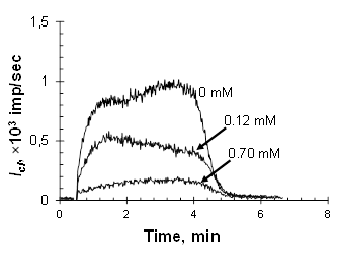NANOSYSTEMS: PHYSICS, CHEMISTRY, MATHEMATICS, 2020, 11 (3), P. 324–332
CeO2 nanoparticles as free radical regulators in biological systems
M. M. Sozarukova – Kurnakov Institute of General and Inorganic Chemistry, Russian Academy of Sciences, Leninsky Prospect, 31, Moscow, 119991, Russia; s_madinam@bk.ru
E.V. Proskurnina – Research Centre for Medical Genetics, Moskvorechie St, 1, Moscow, 115522, Russia; proskurnina@gmail.com
A. E. Baranchikov – Kurnakov Institute of General and Inorganic Chemistry, Russian Academy of Sciences, Leninsky Prospect, 31, Moscow, 119991, Russia; a.baranchikov@yandex.ru
V. K. Ivanov – Kurnakov Institute of General and Inorganic Chemistry, Russian Academy of Sciences, Leninsky Prospect, 31, Moscow, 119991, Russia; van@igic.ras.ru
Cerium dioxide nanoparticles possess unique physical and chemical properties, among which the enzyme-like activity is of particular interest. In particular, they are able to perform the functions of pro- and antioxidant enzymes, such as superoxide dismutase (SOD), catalase, and peroxidase. Due to the advantages associated with pH and temperature stability and low cost, CeO2 nanoparticles can be considered as promising mimetics of these enzymes. In this paper, the antioxidant activity of a citrate-stabilized colloidal suspension of CeO2 nanoparticles has been studied using chemiluminometry in model systems generating superoxide anion radical and hydrogen peroxide. In the lucigenin/xanthine/xanthine oxidase system, generating a superoxide anion radical, CeO2 nanoparticles exhibit antioxidant properties increasing upon conjugation with SOD. When interacting with hydrogen peroxide, CeO2 nanoparticles exhibit peroxidase-like activity. In the combined ROS generating system, lucigenin/Co(II)/H2O2, CeO2 nanoparticles demonstrated prooxidant activity.
Keywords: cerium dioxide nanoparticles, superoxide anion radical, hydrogen peroxide, nanozymes, superoxide dismutase, peroxidase, chemiluminescence.
